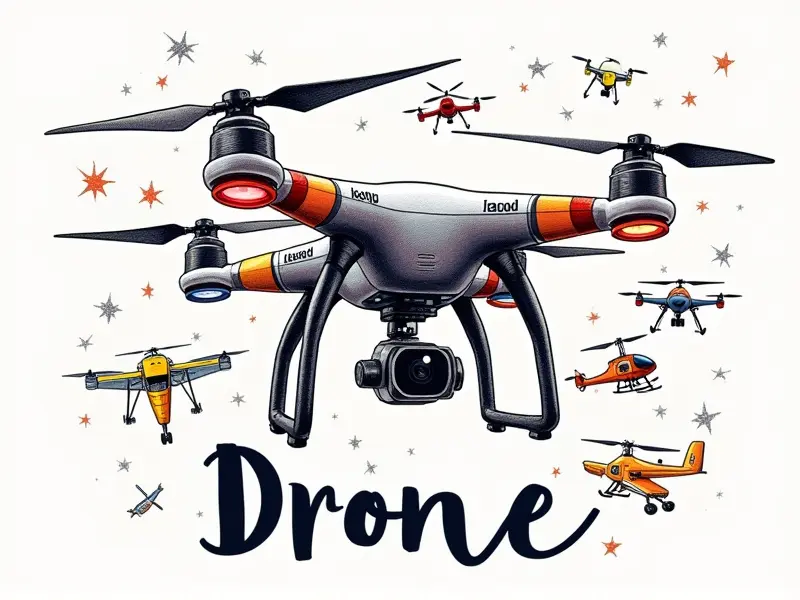How to fly Walkera drone?

Mastering Walkera Drone Basics
Flying a Walkera drone can be an exhilarating experience, but it requires some understanding of the basics. Before you take off, familiarize yourself with your drone's controls and features.
- Controls: Learn how to operate the remote control effectively, including throttle, yaw, pitch, and roll.
- Battery: Ensure that your battery is fully charged before every flight. A depleted battery can lead to unexpected crashes or malfunctions.
- Propellers: Make sure all propellers are securely attached and free of debris.
Quick Start Guide for Flying Walkera Drones
The following steps will help you get started with flying your Walkera drone safely and confidently.
- Pre-flight Checklist: Check the battery, propellers, remote control, and any additional accessories.
- Setup: Position yourself in an open area away from obstacles. Ensure you have a clear line of sight to your drone for manual flights.
- Fly: Start with short flights to get used to the controls before attempting more challenging maneuvers.
Top Tips for Flying Your First Walkera Drone
Here are some essential tips to help you become a proficient drone pilot:
- Pace Yourself: Take your time and don’t rush. Gradually increase the difficulty of your flights as you gain confidence.
- Practice Landings: Consistent landings are crucial for maintaining control over your drone.
- Learn from Mistakes: Every crash is a learning opportunity. Analyze what went wrong and adjust accordingly.
Essential Skills for Flying a Walkera Drone
To fly a Walkera drone effectively, you need to develop the following skills:
- Manual Control: Master basic maneuvers such as hovering, ascending, descending, and turning.
- Safety Awareness: Always be aware of your surroundings and potential hazards.
- Maintenance: Regularly inspect and maintain your drone to ensure optimal performance.
Navigating with Ease on Your Walkera Drone
Effective navigation is key to flying a Walkera drone. Here are some tips for better control:
- Use GPS: Enable the GPS feature for more stable and accurate flight paths.
- Visual Line of Sight (VLOS): Maintain VLOS to avoid losing track of your drone’s location.
- Obstacle Avoidance: Keep an eye out for potential obstacles that could interfere with your flight path.
Perfecting Flight Control on Walkera Drones
To enhance your flying skills, focus on these areas:
- Smooth Transitions: Practice smooth transitions between maneuvers to maintain stability and control.
- Avoid Overcorrection: Be mindful of overcorrecting when the drone drifts off course. Small adjustments are usually sufficient.
- Speed Management: Adjust your speed based on the conditions and your comfort level to maintain control.
Advanced Techniques for Walkera Drone Pilots
Once you have mastered the basics, explore these advanced techniques:
- Acrobatic Maneuvers: Learn flips, rolls, and other aerobatics to showcase your skills.
- FPV Flying: Use first-person view technology for an immersive flying experience.
- Trajectory Planning: Plan out complex flight paths in advance for smoother execution.
Best Practices for Flying Walkera Drones Safely
Safety should always be your top priority when flying a drone. Follow these best practices:
- Follow Regulations: Be aware of local laws and regulations regarding drone use.
- Use Protective Gear: Wear protective goggles if you are using FPV technology.
- Avoid Crowded Areas: Choose open spaces away from people, animals, and buildings.
Optimize Flight Performance on Walkera Drones
To get the most out of your drone, optimize its performance with these tips:
- Software Updates: Keep your drone’s firmware up to date for improved functionality.
- Battery Management: Use high-quality batteries and charge them properly before each flight.
- Weather Conditions: Fly in good weather conditions to avoid interference from wind or rain.
Navigate Like a Pro with Walkera Drones
Become a pro at navigating your drone by implementing these strategies:
- Practice Navigation: Regularly practice navigation skills in various environments to improve proficiency.
- Use Maps and Apps: Utilize mapping apps and software for better orientation during flights.
- Plan Flight Paths: Plan your flight paths ahead of time to ensure efficient navigation.
Master FPV with Walkera DroneFlying
Flying in first-person view (FPV) requires additional skills and equipment. Here’s how to get started:
- Setup: Install the necessary hardware, such as goggles and a video transmitter.
- Practice: Start with short FPV flights in familiar areas before venturing out into more challenging environments.
- Safety First: Always prioritize safety when flying in FPV mode to avoid accidents.
Conclusion
Mastery of a Walkera drone requires patience, practice, and dedication. By following the guidelines outlined above, you can enhance your flying skills and enjoy an enriching experience with your drone. Remember to prioritize safety at all times and always be learning new techniques to improve your performance.

